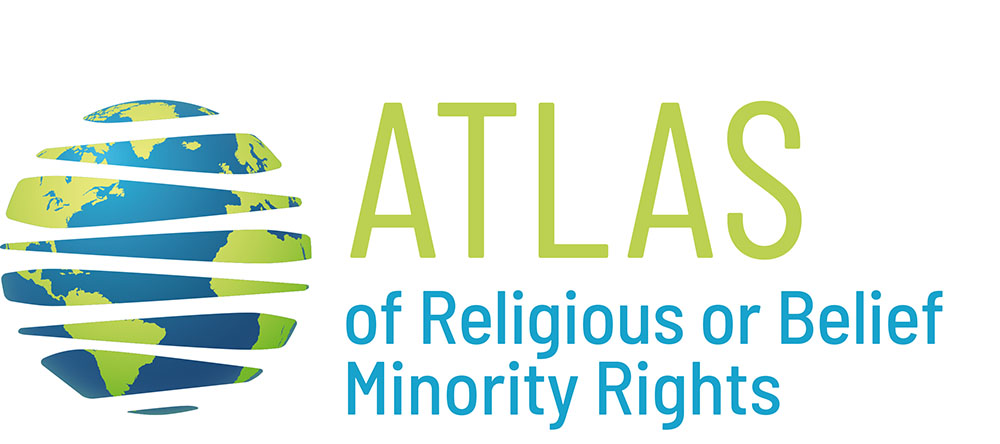Religious/belief communities and organizations
Currently the Atlas includes the following RBMs: Buddhist communities, Catholic Church, Church of Jesus Christ of Latter-Day Saints (Mormons), Hindu communities, Islamic communities, Jehovah’s Witnesses, Jewish communities, Orthodox Churches, Protestant Churches (mainline and evangelical: see the “Methodology” section), Scientology, Sikh communities, and Belief organizations.

BELIEF ORGANIZATIONS

BUDDHISTS

CATHOLICS

MORMONS

HINDUS

MUSLIMS

JEHOVAH'S WITNESSES

JEWS

ORTHODOX CHRISTIANS

PROTESTANTS MAINLINE

PROTESTANTS EVANGELICAL

SCIENTOLOGY

SIKHS
Tips for reading and interpreting data correctly
In some countries rights that have been given to one community or stream within a RBM have not been given to other communities or streams within the same RBM. In Austria, for example, the rights granted by the state to Sunni Muslims and Shiite Muslims are not the same. Where they have a significant impact on the score of the whole RBM, these internal differences are noted but as a general rule, when attributing a score, the same score has been attributed to the whole RBM even though only part of it enjoys the right corresponding to that score.
It is possible that a BO enjoys a right equivalent to that enjoyed by a religious minority on the basis of a provision different from those applicable to religious minorities (such as the right to visit prisons as a representative of a cultural or social organization). In these cases, when attributing a score, the BO was deemed not to enjoy that right because the enjoyment is based on a provision that does not apply to religious minorities.
In the countries where there is no majority religion (Estonia and Hungary), the G-index cannot be calculated. Therefore these countries do not appear in the G-index list of countries. Moreover, the G-index does not show data for the countries where the RBO taken into consideration represents the majority (Poland in the page devoted to the Catholic Church for example).
Note on the data regarding religious demographics
The data concerning religious demographics are taken from the World Religion Database (WRD). The Atlas data concerning the members of the Catholic, Orthodox, Protestant Churches, Unaffiliated Christians and Independent Christians (see below) are slightly different from the data in the WRD, which includes, as a subheading of Christians in addition to the aforementioned groups, the “double affiliated,” represented with a negative value. The doubly affiliated is someone with two religious affiliations and the negative value is necessary to avoid counting him/her as two people. The negative figure of the double affiliated was therefore subtracted from each subgroup of Christians in proportion to the number of those affiliated with the subgroup itself.
Independent Christians are Christians who do not self-identify with Protestant, Catholic, or Orthodox churches. The category includes the Church of Jesus Christ of Latter-day Saints, Jehovah's Witnesses, African Independent Churches, and any other denomination or network that was formed independently out of Protestant, Catholic, or Orthodox churches or formed as breakaway groups from those churches.
The Atlas data on religious demographics consider Mainline and Evangelical Protestants together.
The value “0” indicates that the percentage of diffusion of the religious group is <0.5% of the population; when the member count of an RBM does not reach 0.5% of the population in any country, the infographic representing the ratio of the members to the country population is omitted.
INTERACTIVE INFOGRAPHICS
0 respect of international standards
-1 restriction of rights
-1 high gap between religious majority and minorities
0 respect of international standards
-1 restriction of rights
-1 high gap between religious majority and minorities

 MENU
MENU

